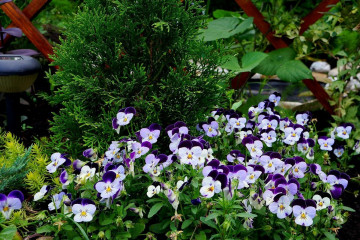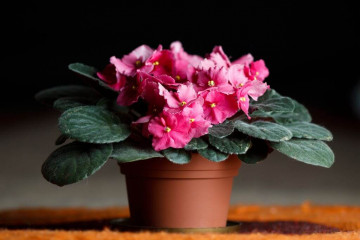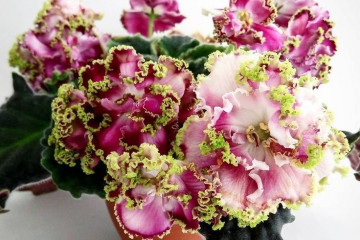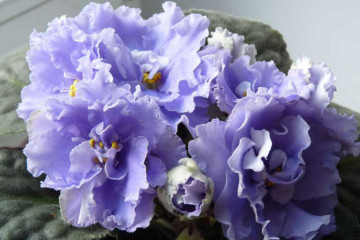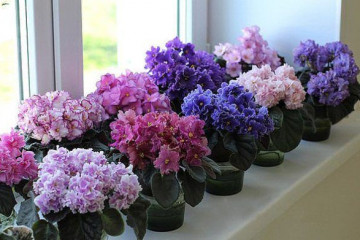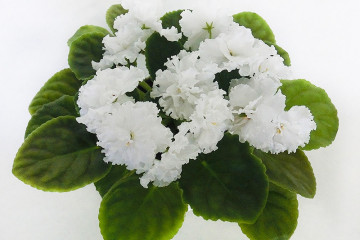Uzambara violet - variety of species
Content:
The Uzambara violet is an unpretentious and very beautiful flower that is often grown by gardeners at home. It is very popular for its bright and very long flowering.
Usambara violet - history of appearance
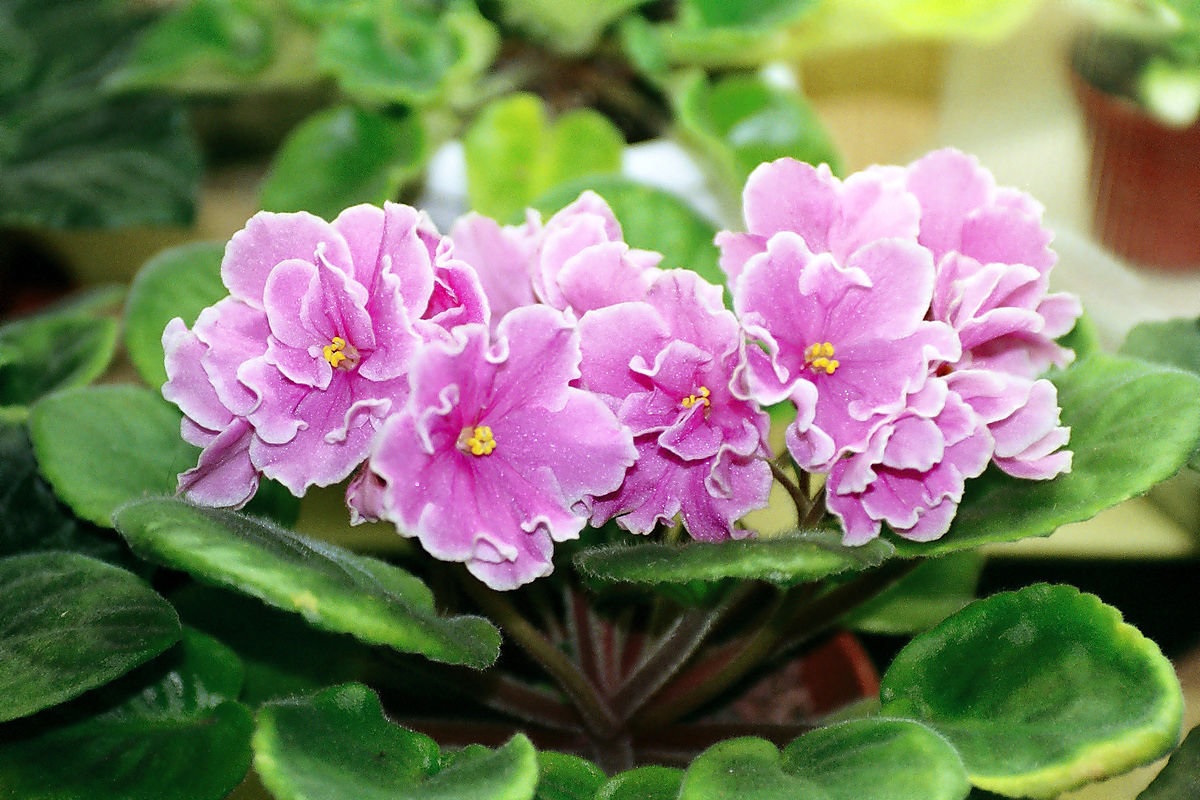
Usambara violet is a popular flower for home cultivation
East Africa is considered the birthplace of Saintpaulia, or the Usambara violet. She was found by Walter von Saint-Paul. Since 1983, the first variety of the uzambar violet has been bred from the seeds. The flower was shown to the public at a flower exhibition in the city of Ghent. After the presentation, the right to breed it was bought by E. Banari's company.
In 1927, the violet was brought to the United States and immediately became very popular. From that moment on, they began to breed her at home. By 1949, more than 100 varieties had appeared.
Classification of species, names
There are a lot of varieties of uzambar violets. In this regard, they are classified according to different criteria.
By flower shape
There are five types of Saintpaulia, which differ from each other in the shape of the flower:
- Wasp - in this shape, two petals are twisted in the form of a tube, two are separated, and the rest go down.
- Pansies - the shape is two rows of five petals. In the upper row there are two small petals, in the lower row there are three large ones.
- Star - petals of the same size are located in one row.
- The bowl is this shape that persists for the entire flowering period. The petals at the base do not grow together, the flower does not fully open.
- Bell - the shape is so named because of its appearance, the petals have grown together at the base.
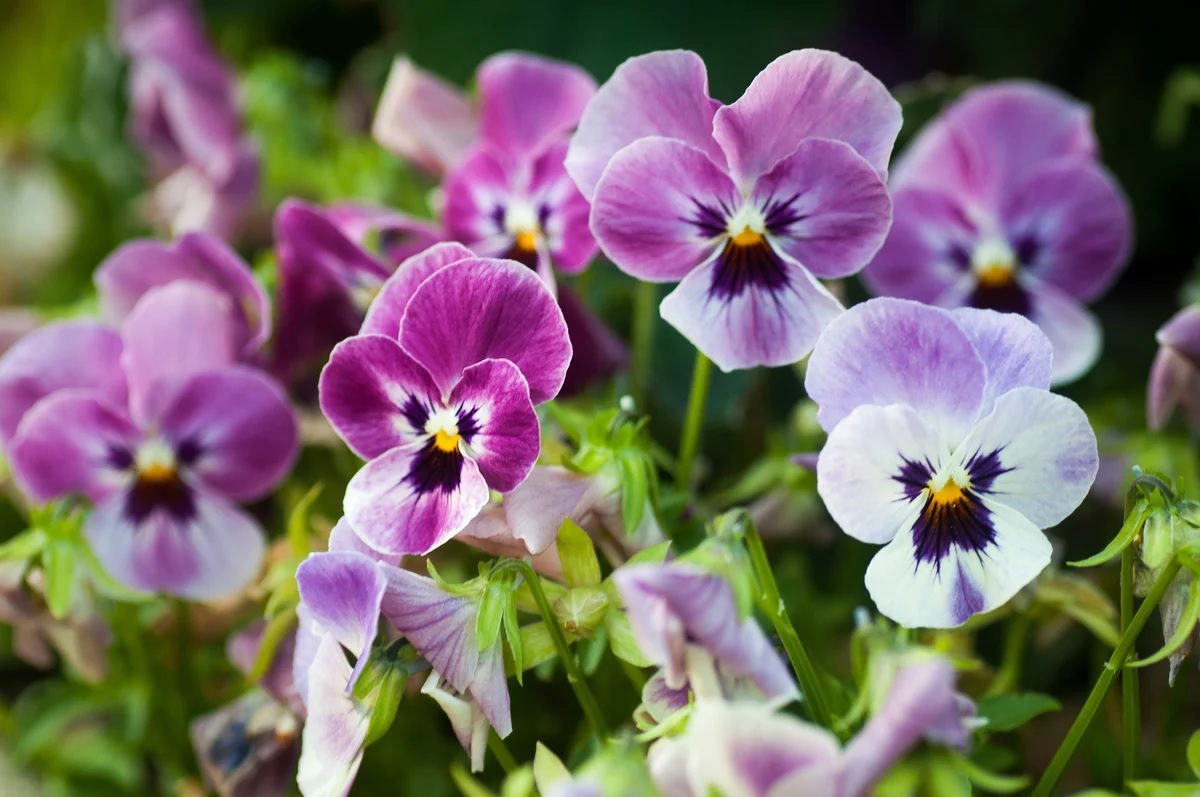
Violet - "Pansies"
By the length of the outlet
According to the parameters of the length of the sockets, the following are distinguished:
- Micro mini - they have a very small root rosette no more than 8 cm in diameter. They are very fragile flowers and are grown in small pots.
- Mini - rosettes up to 15 cm in diameter, species that reproduce well. Their distinctive feature is good rooting, in contrast to large flowers.
- Semi mini - varieties with a rosette up to 20 cm in diameter, it is recommended to plant in partial shade, as direct sunlight is harmful to them.
- Standard - violets with a diameter of up to 40 cm.
By the color of the petals
A separate classification is highlighted by color:
- plain;
- two-tone, which combine several tones of the same color;
- multi-colored - they are characterized by a bright contrasting border, most often these are terry types;
- fringed - in such violets, the petal is completely bordered;
- finger-colored - flowers that have a spot on the petals that looks like fingerprints;
- "Eye" - a round speck is located in the center of the violet (most often in color it is close to the main shade);
- mesh - this color resembles a mesh on the surface of the petals, it is very rare.
You can find an interesting "fantasy" color scheme, which is distinguished by a pattern of various shapes and colors.
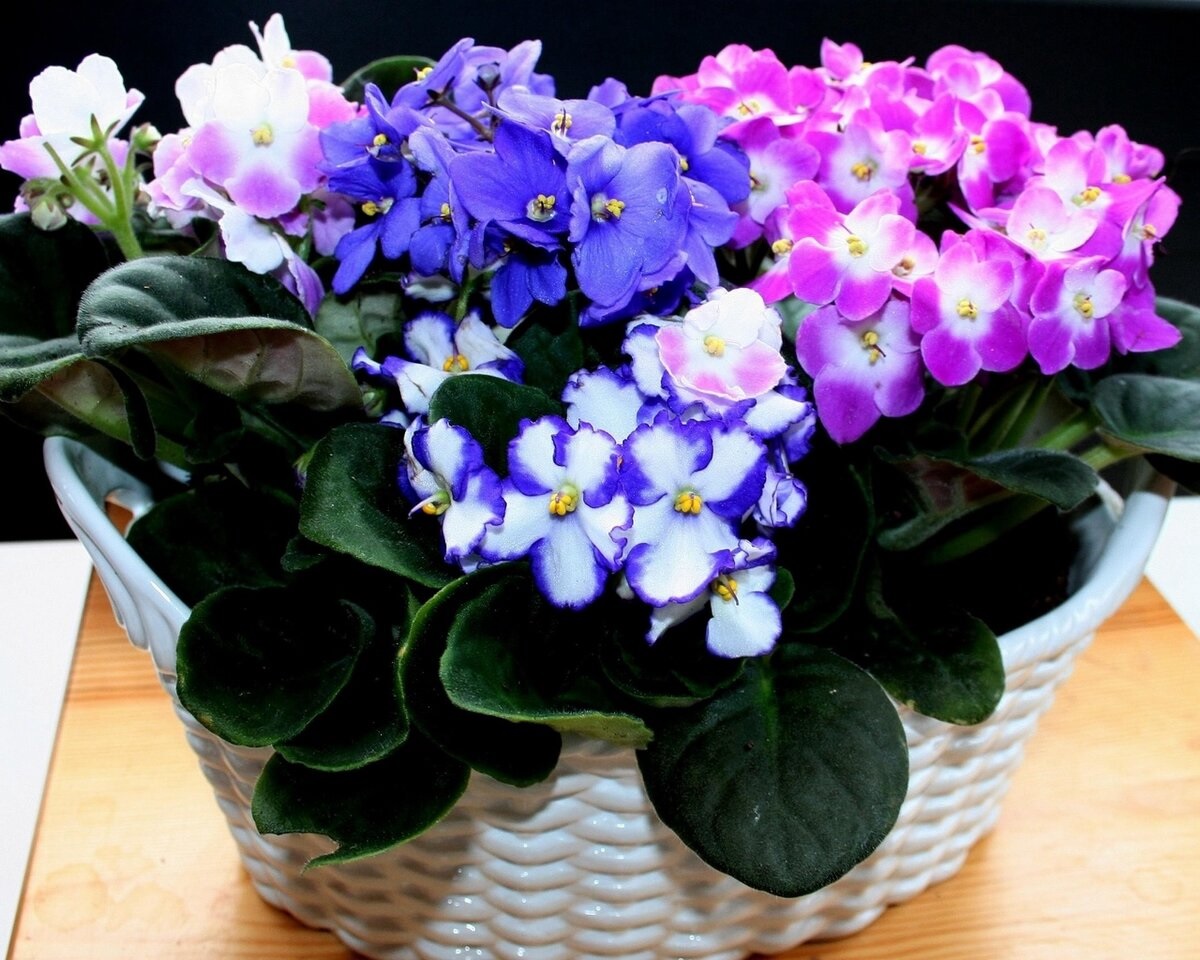
Multi-colored violets have a bright border
By the degree of terry
Depending on the number of petals, the doubleness of the flower is determined. On this basis, the following are distinguished:
- simple - they have only five petals;
- semi-double type, scallop, they have from six to ten petals;
- terry - this is a violet of Saintpaulia, which has at least 11 petals, the stamens of such flowers are completely hidden;
- "Carnations" - this species is very similar to terry, but it is larger, there are more petals on one peduncle.
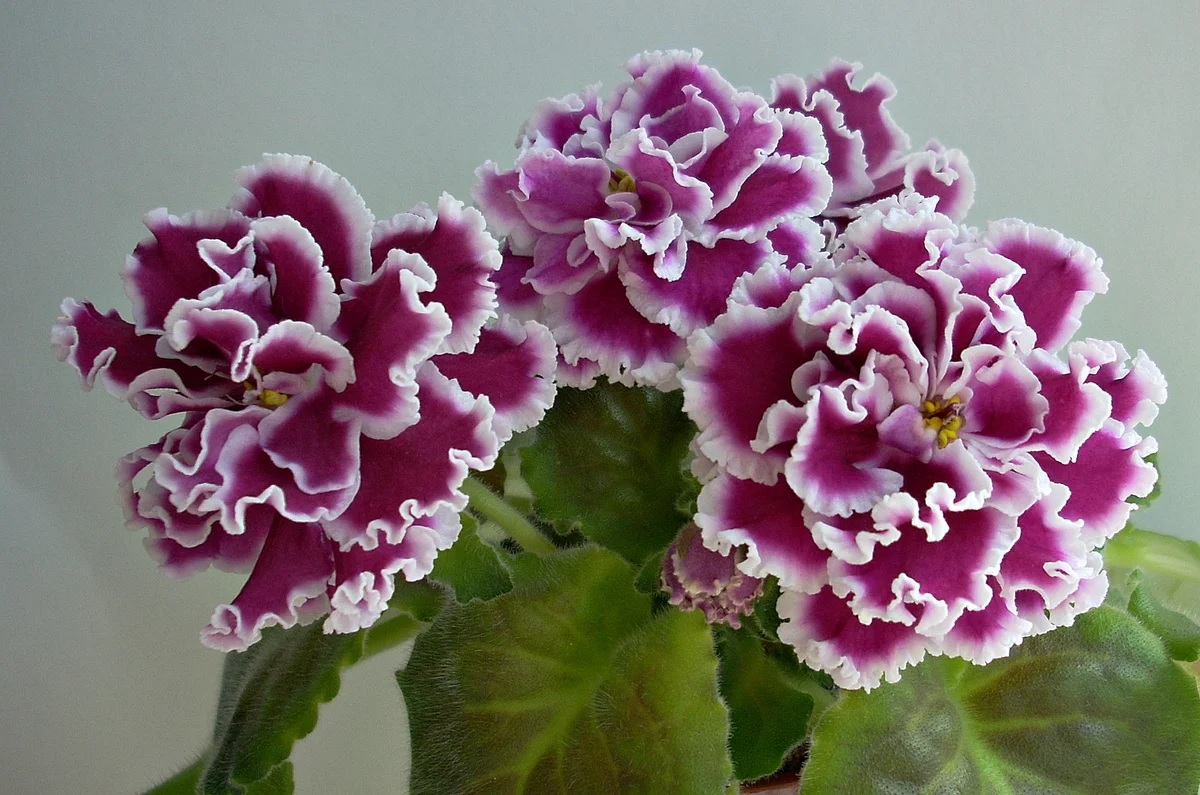
Terry violets are flowers with 11 petals and completely hidden stamens
Along the edge of the petal
Depending on the edge of the petals, violets can be fringed, notched and wavy.
Wild varieties
In the mountains of Tanzania and Kenya, you can find wild varieties of violets. It grows along river banks or waterfalls. A flower in natural conditions requires partial shade. If direct sunlight falls on him, he will die.
There are only 20 species of wild-growing violets. The most common ones:
- violet saintpaulia - a large flower with shortened stems, heart-shaped leaves with large purple flowers;
- Senplia Grotte - ampelous violet with bright green leaves, purple flowers with dark edging.
Unusual varieties
The most popular among flower owners are ampel violets. Their stem can grow up to 50 cm. The main feature of this variety is lush flowering, thanks to the flexible and long stem, beautiful compositions for the garden can be formed.
Planting and grooming recommendations
Caring for the uzambar violet at home is not difficult.
What kind of soil he likes, lighting, degree of moisture, planting capacity
For proper growth and flowering, it is recommended to follow several rules:
- Saintpaulia loves the sun, but not direct rays, but diffused light. The flower should be illuminated for at least 10 hours a day. If the flower is under the sun for a long time, it will get burns. In winter, you need to additionally organize lighting.
- The room temperature should be at least 22 degrees.
- Violet loves medium humidity. It is recommended to put a plate with water or wet expanded clay next to the flower.
- You need to water the plant only with settled water, always warm. The pan watering method is recommended.
- The soil for violets should be chosen loose so that it allows air and moisture to pass through well.
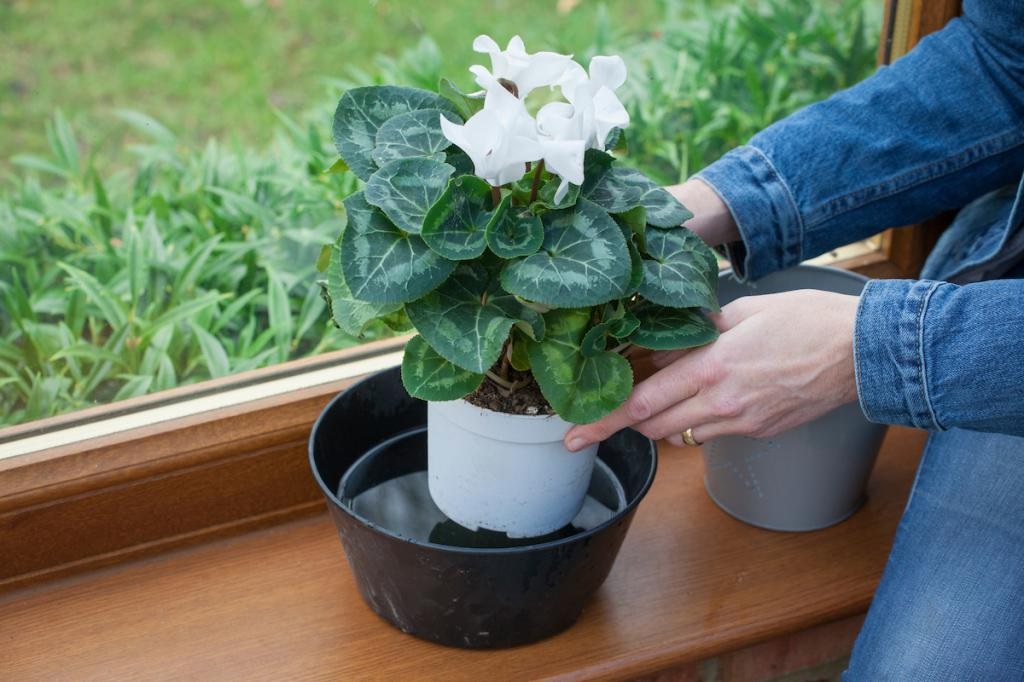
It is recommended to water the violet through the pallet.
The main difficulties in caring for a plant
Most often, when caring for violets, everything is very simple. Problems may arise with the need to organize a long daylight hours during the winter, as well as with the achievement of the necessary moisture parameters. When watering, it is very important that drops fall only on the soil itself, and not on parts of the plant.
Features of reproduction at home
Reproduction of the uzambar violet can be carried out in several ways:
- cuttings;
- seeds;
- stepchildren;
- peduncles.
Each species has its own characteristics.
Description of popular breeding species
It is necessary to propagate by seed method violets of non-hybrid varieties. But the most popular method is cuttings. There are two options for how to carry out the procedure:
- rooting leaves in water, then planting them in a pot;
- planting cut leaves directly into the soil.
The violet begins to bloom two to three months after the cutting is cut.
Possible problems in growing uzambar violets
Violets are very popular due to their unpretentious care. But, if the necessary rules are not followed, the plant can get sick or be attacked by parasites.
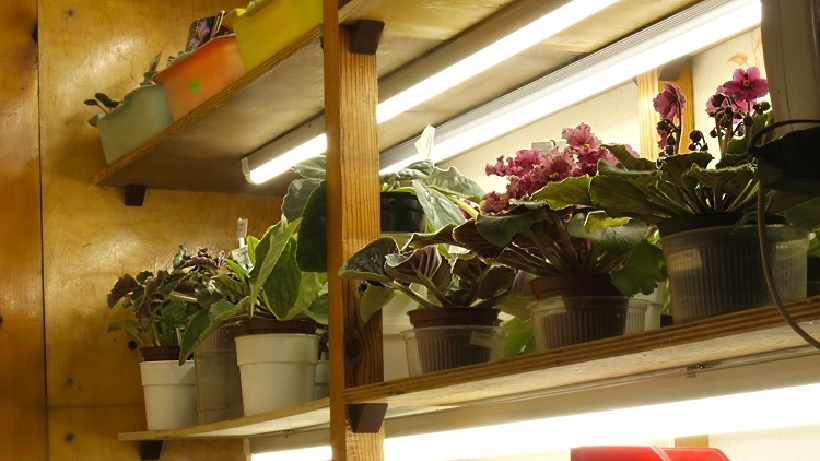
The difficulty in leaving most often arises in the organization of additional lighting in the winter.
Diseases
Saintpaulias, which are grown at home, often have the following types of disease:
- vascular bacteriosis;
- rust on the leaves;
- rot;
- late blight;
- powdery mildew.
To avoid infection, you must follow all the rules for watering, observe the desired level of humidity.
Pests
Difficulties can arise if the flower has been attacked by insect pests. It can be infected by nematodes, ticks, aphids or mealy worms. The difficulty lies in the fact that the plant itself is difficult to tolerate processing with chemicals. Therefore, during the procedure, you need to be careful and in no case exceed the recommended dosages.
Other problems
Many problems can arise from not following plant care tips. If there is not enough light for it, then spots will appear on the leaves, they will become elongated and thin. Withering is observed if water has got on the flower or the leaves are dried out under the influence of sunlight.
The Uzambara violet often adorns the windowsills of houses and apartments. These vibrant plants of various species with long flowering will be an excellent interior decoration in any style.
